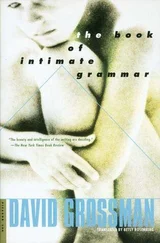KIM IL SUNG GIFT MUSEUM
(Mount Myohyang, North Korea)
Housed in a 120-room, 6-storey temple north of Pyongyang, the museum is home to 90,000 gifts that have been given to Kim Il Sung, the late dictator of Communist North Korea and to his son, Kim Jong Il, the current dictator. Included are Nicolae Ceausescu’s gift of a bear’s head mounted on a blood-red cushion, a Polish machine gun and a rubber ashtray from China’s Hwabei Tyre factory. Twenty rooms are devoted to gifts given to Kim’s son, Kim Jong Il, including an inlaid pearl and abalone box from the Ayatollah Khomeini and a pen set from the chairman of the Journalist Association of Kuwait.
ANTIQUE VIBRATOR MUSEUM
(603 Valencia, San Francisco, CA 94110, USA; http://www.goodvibes.com/museum.html)
The museum has collected more than 100 vibrators going back to 1869. Antique models include a hand-crafted wooden vibrator that works like an egg-beater and another that advertises ‘Health, Vigour and Beauty’ to users. The museum’s collection is displayed in Good Vibrations, a sex-toy emporium.
AMERICAN ACADEMY OF OTOLARYNGOLOGY MUSEUM
(One Prince St, Alexandria, VA 22314-3357, USA; http://www.entnet.org/museum/index.cfm)
Devoted to the world of head and neck surgery, the museum displays special exhibits dealing with such topics as the history of the hearing aid and the evolution of tracheotomies. The diseases of famous people are examined, including Oscar Wilde’s ear infections and Johannes Brahms’s sleep apnoea. The giftshop sells holiday decorations in the shape of ear trumpets.
SULABH INTERNATIONAL MUSEUM OF TOILETS
(Mahavir Enclave, Palm Dabri Marg, New Delhi, India; www.sulabhtoiletmuseum.org)
The Sulabh International Social Service Organization was created to bring inexpensive but environmentally safe sanitation to poor, rural areas. On the grounds of their headquarters, they have built an indoor and outdoor museum that presents the history of toilets around the world. One panel reprints poetry relating to toilets and another gives examples of toilet humour from around the world.
BRITISH LAWNMOWER MUSEUM
(106–114 Shakespeare Street, Southport, Lancashire, PR8 5AJ, United Kingdom)
The museum includes 400 vintage and experimental lawnmowers, highlighting the best of British technological ingenuity. Of particular interest are the 1921 ATCO Standard 9 Blade, a solar-powered robot mower, and unusually fast or expensive mowers.
MARIKINA CITY FOOTWEAR MUSEUM
(Manila, Philippines)
Former Philippine first lady Imelda Marcos, the world’s most notorious shoe collector, donated the collection that made possible the opening of this footwear museum on February 16, 2001. The displays at the museum include several hundred of the pairs of shoes left behind at the presidential palace when Imelda and her husband Ferdinand fled the country in disgrace in 1986. Other shoes at the museum were donated by local politicians and film stars.
ICELANDIC PHALLOLOGICAL MUSEUM
(Hedinsbraut 3a, 640 Húsavík, Iceland)
The world’s only museum for genitalia, the Icelandic Phallological Museum contains more than 218 preserved penises, as well as specimens that have been pressed into service as purses, walking sticks and pepper pots. The museum’s holdings represent nearly all of Iceland’s land and sea mammals, with the 47 whale specimens making for the most impressive viewing. As yet, the museum has no human specimen, but an elderly man has pledged his privates in a legally-binding letter of donation.
14 OF THE STRANGEST THINGS FOUND IN LONDON TRANSPORT’S LOST PROPERTY OFFICE
• 2½ hundredweight of sultanas/currants
• Lawn mower
• Breast implants
• Theatrical coffin
• Stuffed eagle
• 14-ft boat
• Divan bed
• Park bench
• Garden slide
• Jar of bull’s sperm
• Urn of ashes
• Dead bats in container
• Vasectomy kit
• Two human skulls in a bag
THE 7 WONDERS OF THE ANCIENT WORLD
Who created one of the earliest and most enduring of all lists, a list that arbitrarily named the seven most spectacular sights existing in the world 150 years before the birth of Jesus Christ? The list was created by a most respected Byzantine mathematician and traveller named Philon. In a series of arduous trips, Philon saw all of the western civilised world there was to see in his time, and then he sat down and wrote a short but widely circulated paper entitled De Septem Orbis Spectaculis (The Seven Wonders of the World).
THE GREAT PYRAMID OF CHEOPS (Egypt)
Begun as a royal tomb in c. 2600BC, standing in splendour 2,000 years before any of the other Seven Wonders were built, this largest of Egypt’s 80-odd pyramids is the only Wonder to have survived to this day. Located outside Cairo, near Giza, the burial tomb of King Cheops was made up of 2.3 million blocks of stone, some of them 2½ tons in weight. The height is 481 ft, the width at the base 755 ft on each side, large enough to enclose London’s Westminster Abbey, Rome’s St Peter’s and Milan’s and Florence’s main cathedrals.
THE HANGING GARDENS OF BABYLON (Iraq)
They were not hanging gardens, but gardens on balconies or terraces. When Nebuchadnezzar brought home his new wife, a princess from Medes, she pined for the mountains and lush growth of her native land. To please her, in 600BC the king started to build a man-made mountain with exotic growths. Actually it was a square climbing upward, each densely planted with grass, flowers and fruit trees, irrigated from below by pumps manned by slaves or oxen. Inside and beneath the gardens, the queen held court amid the vegetation and artificial rain. Due to the erosion of time and influx of conquerors, the Hanging Gardens had been levelled and reduced to wilderness when Pliny the Elder visited them before his death in AD79.
THE STATUE OF ZEUS AT OLYMPIA (Greece)
The multicoloured Temple of Zeus, in the area where the Greek Olympic Games were held every fourth year, contained the magnificent statue of Zeus, king of the gods. Sculptured by Phidias (who had done Athena for the Parthenon) some time after 432BC, the statue was 40 ft high, made of ivory and gold plates set on wood. Zeus, with jewels for eyes, sat on a golden throne, feet resting on a footstool of gold. Ancients came from afar to worship at the god’s feet. A Greek writer, Pausanias, saw the statue intact as late as second century AD. After that it disappeared from history, probably the victim of looting armies and fire.
THE TEMPLE OF DIANA AT EPHESUS (Turkey)
Summing up his Seven Wonders, Philon chose his favourite: ‘But when I saw the temple at Ephesus rising to the clouds, all these other wonders were put in the shade.’ The temple, a religious shrine built after 350BC, housed a statue of Diana, goddess of hunting, symbol of fertility. The kings of many Asian states contributed to the construction. The temple, 225 ft wide and 525 ft long, was supported by 127 marble columns 60 ft high. St Paul, in the New Testament, railed against it, being quoted as saying that ‘the temple of the great goddess Diana should be despised, and her magnificence should be destroyed, whom all Asia and the world worshippeth’. The craftsmen of the temple disagreed: ‘And when they heard these sayings, they were full of wrath, and cried out saying, “Great is Diana of the Ephesians”’. Ravaged and brought down by invaders, the temple was rebuilt three times before the Goths permanently destroyed it in AD262. In 1874, after 11 years of digging, the English archaeologist J.T. Wood unearthed fragments of the original columns.
Читать дальше












